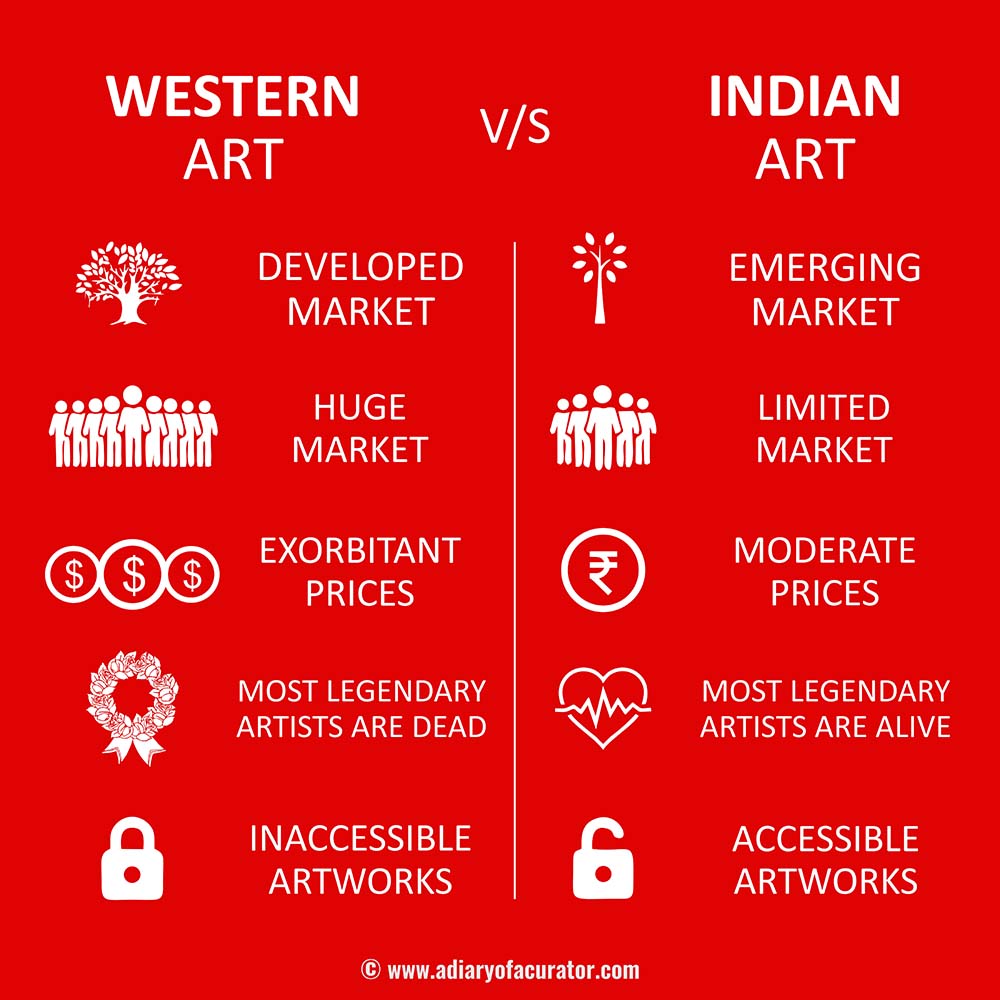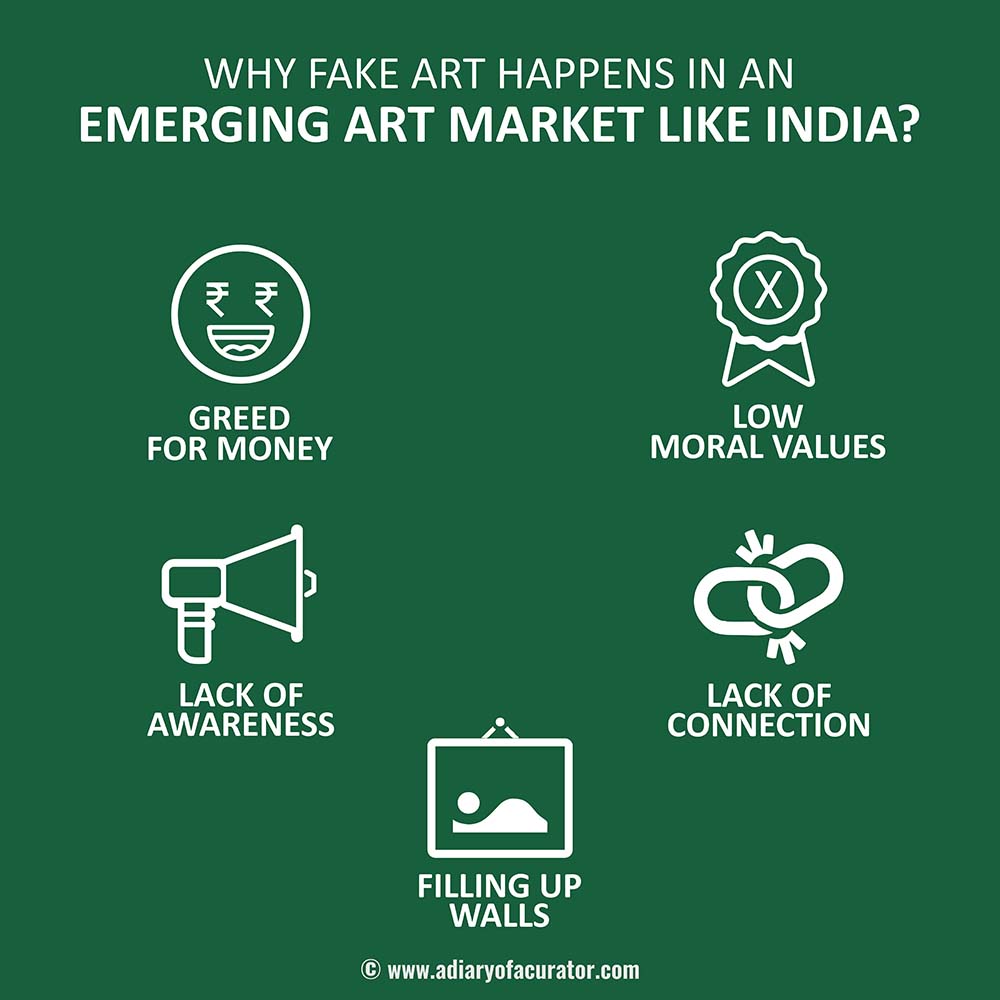Podcast
Episode 3: Difference Between Indian and Western Fake Art
In the Western Art Market, the artworks copied are generally of a high price and are years old works. In addition, it is a developed market. The prices are exorbitant even for the upper middle class to collect them. Many artworks remain unseen now, are lost somewhere or are in the hands of private collectors or museums. This way the urge for wrongdoing comes up. In seldom instances, Fake artwork has popped up in their museums, auctions or galleries. Movies like, Oceans 8 and Oceans 11 find a mention about it and many authors have written about this.


Yet the reason is simple and understood:
- Because the market is huge.
- The artworks are extremely expensive.
- The artworks are inaccessible (for they are in museums or private collections) and date back to centuries. That does not mean one cannot consider this as ‘forgery’ or as I would like to put is ‘stealing someone’s intellect’ but the reason is quite understandable.

However, what I cannot comprehend is why it happens in India. We do not match to any of the above criteria. Our HNIs and upper middle class can afford any top Indian artist. We are still developing art market. Most of the master works are available for sale in the Art Galleries.
- The artworks are not that costly.
- Most of the leading artists are still alive and the artworks of the famous and respected late artists are still available. A few steps in the India Art Fair and you get Raza’s and Souza’s works at every alternate gallery in bulk.
- The rare artworks are available in galleries and auction.
- Hardly a handful of our population understands the real value of how beautiful, powerful and significant the Indian art and culture is. Be it for commercial or aesthetic purposes.

Why Fake art is created in developing Art Market like India?
- The Greed to earn more – Low morale values and easy earnings
Somewhere I would say as a part of curators, galleries and artists, we have been lacking somewhere in creating awareness about the significance of Indian art and artists. Nevertheless, that does not mean you can steal someone’s bread just because you do not know him. That might be true in today’s corporate culture but art is all about emotions and that accounts to our moral values. - Lack of awareness and connectivity with Indian art and artists
Unaware Art buyers might be one of the reason. As they might not be as interested in checking the source, background, artist, his style etc. giving a free hand to such frauds, as they know no one is going to crosscheck. Hence, they are susceptible to be cheated. - Demand for the works
For unaware and disconnected buyers, filling up walls is more important than understanding that artworks are a source of a better living, aesthetics, culture, and subject.
Photos and Text © Chaitya Dhanvi Shah

